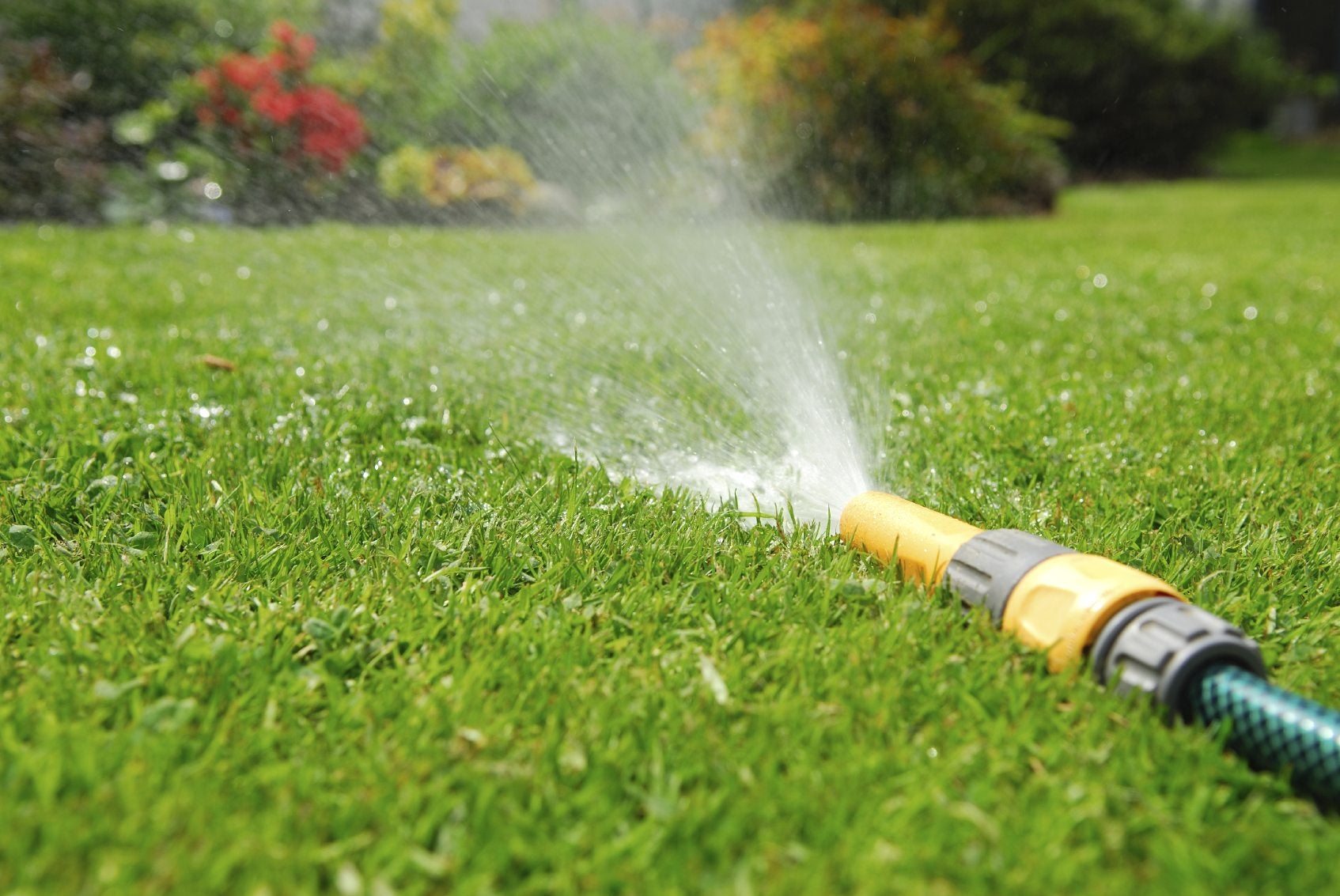Lawn Watering Guidelines: Best Time To Water Lawns And How


How do you keep a lawn lush and green, even during the long, hot days of summer? Watering too much means you’re wasting money and valuable natural resources, but if you don’t water enough, your lawn can turn yellow and brown. Read on for lawn watering guidelines and helpful watering lawn care tips.
Lawn Watering Guidelines
Here are the basic guidelines for when and how to water your lawn more effectively.
When to Water Lawns
The best time to water lawns is when the grass begins to show signs of stress. A stressed lawn will look slightly wilted with a bluish-green tint instead of its usual emerald green. If footprints or lawnmower tracks remain on the grass 30 minutes after you mow or walk across it, the lawn is stressed. You can test soil moisture by inserting a screwdriver, trowel, or similar object into the grass. If the ground is so hard that the screwdriver doesn’t slide in easily, the soil is too dry. Always confirm that the lawn needs water by testing the soil before irrigating; hot, dry weather can cause the grass to look stressed even when the soil is still moist. If the grass looks stressed and the soil is still damp, spray the grass with water for no more than 15 seconds. This quick burst of water isn’t considered irrigating because it doesn’t wet the soil; it provides just enough moisture to cool the grass and relieve stress.
How to Water a Lawn
It’s difficult to know how much to water a lawn because the amount depends on several factors, including the type of grass, climate, soil type, and use. Experimentation is the best way to learn. For example, apply about ½ inch (1 cm.) of water if your soil is sandy, and approximately an inch (2.5 cm.) if your soil is fine-textured, clay-based, or heavy. (An inexpensive rain gauge is the easiest way to know how much water you’ve applied.) This amount of water should soak the soil to a depth of 4 to 6 inches (10-15 cm.), but you should test the soil with a trowel or screwdriver to know for sure. If water begins to run off before you’ve irrigated the recommended amount, allow the water to soak in, and then finish watering. (Heavy soil should be watered at a slower rate to help prevent runoff.) Once you’ve done this a few times, you’ll have a better idea about how to water a lawn efficiently.
Additional Watering Lawn Care Tips
Water deeply but only when the grass shows signs of stress; deep, infrequent irrigation creates strong, drought-tolerant roots. Never water every day; watering too frequently encourages shallow, weak roots and unhealthy grass. For a healthy lawn and sturdy roots, wait as long as possible before watering, and don’t bother watering if the weather report predicts rain. Water early in the morning to minimize evaporation. An inexpensive sprinkler timer is an option if you’re not an early bird. Irrigate only the stressed areas of your lawn, as grass doesn’t always dry evenly. Areas with sandy soil or near driveways and sidewalks tend to dry out faster.
Sign up for the Gardening Know How newsletter today and receive a free copy of our e-book "How to Grow Delicious Tomatoes".

A Credentialed Garden Writer, Mary H. Dyer was with Gardening Know How in the very beginning, publishing articles as early as 2007.